There are an abundance of herbs to grow for both food and medicine. These top ten herbs cover some of our most versatile plants, with wide spectrum application for herbal use, and some food use as well.
Herbs add an amazing layer to gardens. From being beneficial in companion planting, to giving herbal and medicinal benefits to us, the gardeners, herbs are valuable allies. The following herbs are a small segment of the beneficial herbs you can grow. These ten herbs to grow provide a versatile range of herbal benefits and abilities, a range of companion planting options, and both kitchen and apothecary options. If you’ve never grown one of these herbs, this year may be a great time to add it to your garden.
Many of these are perennial herbs, with showy blossoms and foliage nice enough to fit into any landscape design. Even culinary herbs, like sage, can fit into landscapes and sneak into perennial flower beds. There’s plenty of herbs, including those listed, that will do well in planter displays, or an indoor herb garden too.

This list is focused on herbs with strong medicinal qualities, not just culinary ones. So while many herbs to grow lists will focus on coriander, sweet marjoram, or French tarragon, this list is focused on calendula, echinacea, chives, mint, and more.
Herbs, in general, love direct sunlight and at least 8 hours a day of sunshine. If growing in a pot, some dappled or intermittent shade in the afternoon can help them stay happy, and keep their roots from drying out.
When aiming for strongly flavored herbs, avoid growing them in rich soil. The poorer, sandy, and well-drained soils will help the herbs the most, and help you have the best flavor in your herbs. Also, the stronger the flavor of an herb, the more medicinal herbal benefit it has too.

St. John’s Wort (Hypericum perforatum):
This medicinal herb is a personal favorite, and the foundation of my herbal apothecary. St. John’s Wort grows in single stalks, to small clumps, with the stems ranging in height from 6-12 inches in the first year, and up to 3 feet in the second and third years. It is a perennial, and will self-seed. It likes full sun, and to dry out between watering. It is worth looking into wild harvesting, if it is growing wild in your area, as it is classified as an invasive in some areas.
St. John’s Wort is a great herb to grow, however, because it is neuroprotective. It is traditionally used to help minor depression, muscle and nerve pain, and topical injury. You can find out more about St. John’s Wort here.
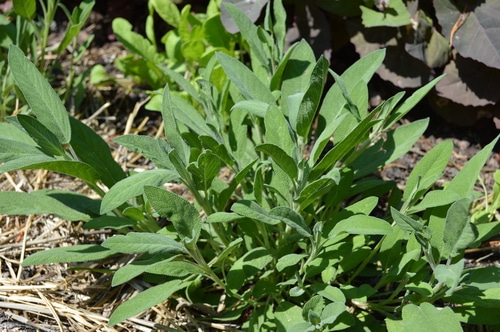
Sage (Salvia Officinalis)
Sage is a long time favorite on my list of herbs to grow. Sage is the traditional flavoring for turkey dressing, but it is also so much more than that. Sage was a mainstay in apothecary gardens, and is anti-bacterial, anti-microbial, and even neuro-protective. It’s been studied for improving memory, and reducing symptoms of memory loss. It’s been cited as helping with menopause and hot flashes, it can bring on stalled menses, helps against anxiety, and can even help with blood clots, colitis, and digestive issues. Quite an impressive list for a spice normally relegated to sausages, poultry spice, and turkey stuffing!
Sage grows best in full sun, planted directly in the garden. It also grows well in containers, both indoors and out. I recommend afternoon shade if growing it outdoors in a container, as that helps avoid drying out. Sage likes semi-dry conditions, with regular deep watering, but not being soaked. It grows well alongside thyme, lavender, and even basil. Or can be used as a companion plant, in borders and edging. Find more uses for sage here.
There are many types of sage besides Salvia officinalis. These include dalmation sage, spotted sage, clary sage, Russian sage, and dozens more sub-types. Russian sage is very showy, and goes great in between, or behind, lower growing lavender bushes. Russian sage is deer resistant.
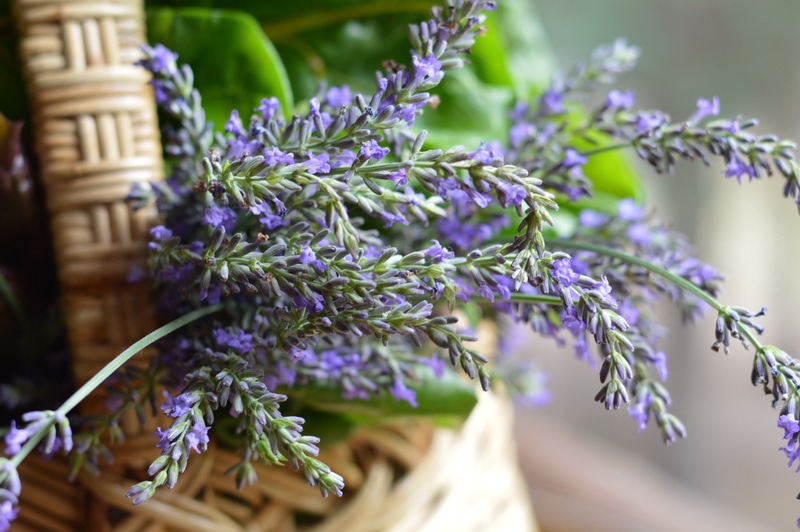
Lavender (Lavandula species)
This plant is a gorgeous herb, with dark silvery evergreen leaves, and showy purple flower spikes. In zones 5 and above there are even white and pink lavender, and in Zone 8 and above there is red lavender. While most lavender likes warm climates, you can grow phenomenal lavender anywhere Zone 3 and above. Lavender can make a great indoor companion herb, with similar needs to rosemary. If you can keep a rosemary plant alive indoors, you can keep a lavender going too. A sunny windowsill, or a spot beside an aeroponic or hydroponic winter growing system is great.
Lavender is traditionally used as a soothing, headache relief and sleep aid in lavender pillows. It’s used for skin healing benefits in salves, and ointments. It’s used in bath bombs, and even in mosquito repellent. Lavender can also be used in culinary dishes, as a spice, and makes an awesome lavender latte.
Lavender is a versatile herb to grow, and is great in-ground, in dry and well drained areas. It can be started from seed, through winter sowing, or carefully in seed trays. The easiest way to propagate lavender, however, is through cuttings from an established plant. Use rooting hormone to encourage root formation, and stick newly cut slips in light, slightly sandy potting soil. Keep in a warm, but not hot, place until the stems root. Separate rooted cuttings, and pot into individual containers. Raising lavender in pots for one or two years helps provide an established bush, if planting in an area with deer or other potential nibblers. If keeping in a pot, lavender should be re-potted once a year, if planning on planting outdoors. Otherwise, re-pot as needed, and always make sure the drainage holes are clear.
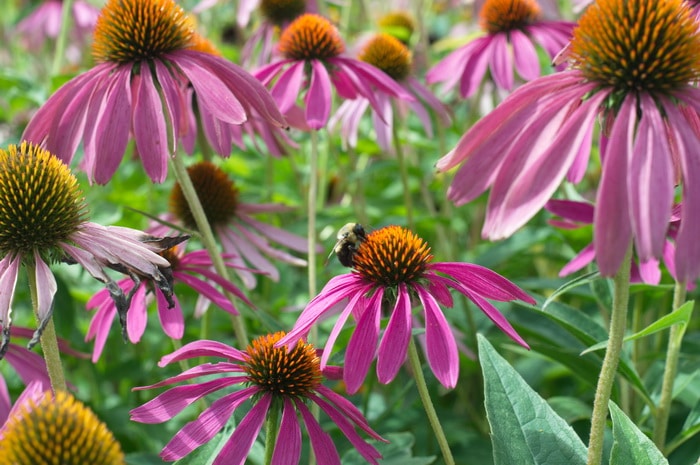
Echinacea (Echinacea purpurea)
Also known as coneflower, echinacea purpurea is a medicinal perennial. It is a great plant to add to perennial borders, and to companion plant with annual herbs like cilantro, or biannual herbs like parsley. It provides beautiful purple, pink, and even white flowers. Actually, there’s even a green and pink echinacea!
Echinacea is traditionally used as a companion remedy to elderberry, and grape leaf, for addressing lingering illness, colds, and general immune support. It is a great perennial to grow for pollinators, native bumble bees love it, and it’s great for cut flower bouquets too. Echinacea infused honey is a great immune booster, and easy to make, just use echinacea petals instead of rose in this recipe. The second year root of echinacea is also used medicinally.
Echinacea is grown from seed, simply sow indoors 4-6 weeks before last frost, and transplant out after the danger of frost is past, or direct sow the seed outdoors at the time you would plant peas. The seeds need light to germinate, so do not cover them. Echinacea will grow in the same spot every year, gradually creating a larger clump. If the clump gets to large, harvest roots for herbal medicine or divide the clump to make two plants. Echinacea can also grow from division.
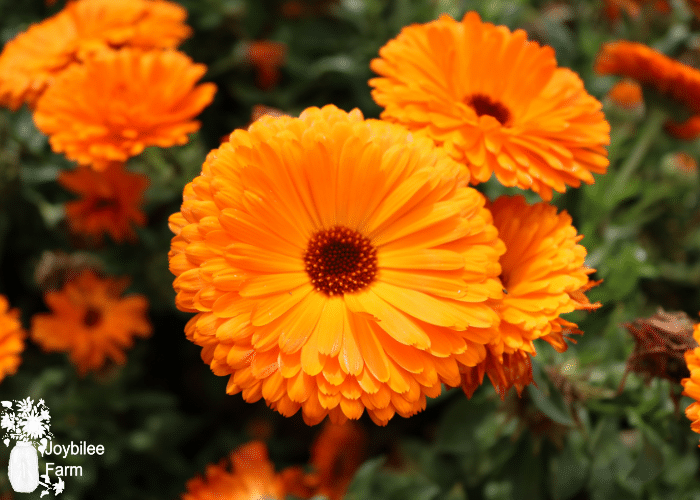
Calendula (Calendula Officinalis)
This is one of my favorite apothecary herbs, that also has kitchen uses. Traditionally calendula petals are used fresh in salads, soups, and other dishes to add color and a faint hint of saffron-like spice. They are also used dried. Calendula infused oil is often used in salves for skin care and first aid.
Calendula grows best in full sun, but can benefit from partial afternoon shade in areas with intense afternoon sun. Simply sow seeds directly in the garden, for best results. Calendula seeds can be planted about 1-2 weeks before the last frost date. Calendula does well as a companion plant with many vegetables and other fresh herb plants.
Find out more about growing and using calendula here.
Calendula also has many different color options, and is a great plant for borders, edging, and as a 6-8″ plant layer in landscaping. It also pairs well with marigolds, and has the same nematode repellent properties in its roots, as marigolds. Calendula, like chamomile is also a wonderful “nurse” plant to grow in a fruit tree guild or near plants that are not as vigorous as you think they should be. Calendula helps the plants near it thrive, by getting rid of root nematodes that feed on the roots, and by drawing up soil minerals from deeper in the soil and releasing them for the plant near by to feed on. Its truly a must-have plant for every garden.

Basil and Tulsi Basil (Ocimum basilicum and Ocimum tenuiflorum)
While these basils are different in taste, the growing requirements are quite similar. When growing herbs, my favorite herb is basil in all it’s forms. Basil likes at least 6 hours of sunlight, more when possible. If planting basil or tulsi basil in a pot, some partial shade in the heat of the day can help. There are many different varieties of tulsi basil, as well as dozens of varieties of regular basil. Basil is more than green leaves, there’s purple varieties too!
Basil does well as a companion plant for peppers, tomatoes, carrots, and other root vegetables. This Mediterranean herb is good for more than just pesto or sauces. It is also used for it’s radio-protective properties! It’s also considered a mood boosting herb, and alongside holy basil is an adaptogen, and liver supporting herb.
Start basil seeds indoors 2-4 weeks before the last frost date. Harden off starting 1 week before last frost date, and plant out about 1 week after the last frost date when the plants are fully hardened off. You can also start basil from cuttings, either from an established plant, or from sprigs from the store or local farm. Basil roots easily.

Oregano (Origanum vulgare)
In connection with basil, oregano is one of the essential spices for pizzas. However, it is also highly anti-bacterial, anti-microbial, and awesome immune booster.
Oregano is a member of the mint family, and will spread. It likes full sun and good drainage. If you don’t have full sun, at least 6-8 hours of direct sunlight is the next best option. Avoid companion planting it with mints, like spearmint, as the flavor can cross. Oregano will grow well with other plants, one friend even had it spread till it was growing with her potatoes!
Oregano can be started from seed 4 weeks before the last frost date. If you’re in a hurry to add oregano to your list of herbs to grow, simply root a fresh cutting from the fresh herb section of a grocery store, or your local farm. Oregano will root from cuttings, and a small oregano plant can be kept in a pot, in a south-facing window over the winter.
Oregano can also be propagated from cuttings, or plant divisions. I prefer growing oregano in a large pot, or small, contained, garden bed, as it can spread. Oregano spreads especially well in any growing zone over 5.
Dry oregano by bundling stalks as they begin to flower, and hanging to dry in a shaded, dry area. Indoor drying is best. Dried oregano can be kept for 1-2 years, or as long as it has strong scent and flavor. Once the flavor begins degrading, it’s time to replace with freshly dried oregano.

Mint (Mentha species)
Most commonly known as a plant for tea, there are dozens of tasty mints in the mint family. Peppermint, spearmint, pear mint, chocolate mint, silver mint, and catmint, and strawberry mint! Mint plants are super easy to grow, and will grow from a cutting or root runner, or from seed.
Mint is versatile in the kitchen, as well as the apothecary. Mint is soothing, and is frequently used in tea for sore throats, and for a cooling drink during hot flashes, or to help break fever. Mint is antispasmodic and will calm an upset stomach. In the kitchen, mint is often used with lamb, pork, and even in chutney, as it aids digestion.
Mint grows well with direct sowing, simply scatter a few seeds in the desired area about 2 weeks before the last frost date. Plants should germinate in one to two weeks, and start growing vigorously within the month. However, mints like peppermint, and chocolate mint do not grow true from seed. If you are looking for a specific flavor of mint get a start from a friend or being with nursery plants. We’ll be talking about other mint family plants in our webinar “Multipurpose mints”, including catnip, lemon balm and catmint. These will grow true from seed.
Mints tolerate partial shade, and can grow well even under heavy conifer shade. If working with purchased mint plants, plant them out after hardening off and around the last frost date. You can also root cuttings of mint from the store, or your local farm. However, remember that mint will spread. Some root restriction is always a good plan with mints.

Dill (Anethum graveolens)
This crazy annual is an awesome culinary herb, and one of the great herbs to grow in any garden. Dill works well as a companion plant, particularly companion planted with Brassica family plants, as it repels cabbage butterflies and attracts parasitic wasps.
For culinary use, dill is often used with pickles, in borscht, and with fish. It pairs well with lemon thyme, in stews, too.
For herbal use, dill is calming and aids digestion. The entire above ground dill plant can be used. It is sometimes used alongside fennel and chamomile in gripe water.
Dill can be direct sown in the garden at any point after the ground can be worked. I like planting it at the same time, and in the same rows, as sowing kale, broccoli, cabbage, bok choy, and napa cabbage. It is also attractive to swallowtail butterflies, particularly as it begins to go to seed and flower. It likes full sun, but can handle dappled shade. Poor and even rocky soil is fine for this herb, and it will attempt to grow wherever seeds land (including gravel paths).
If left in the garden, dill will self-seed and perpetuate itself for many years. A small cluster of self-seeded dill is a great spot to drop off any swallow tail caterpillars that end up on the carrots, lovage, celery, or parsley.
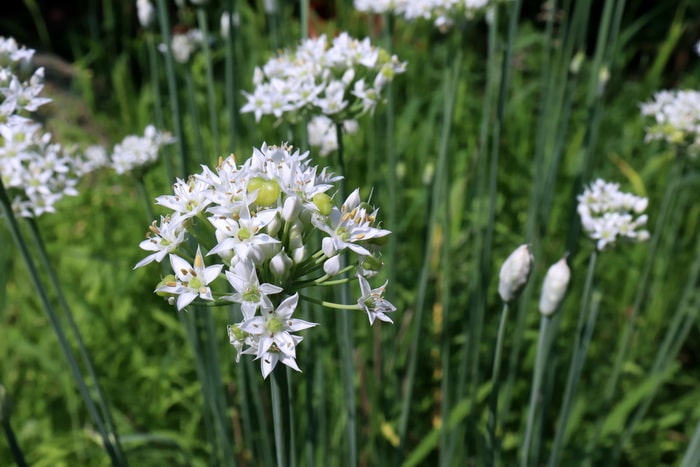
Chives (Allium schoenoprasum)
A member of the allium family, chives are a perennial form of green onion that grows in clumps. Often used with baked potatoes, and poultry dishes, this fine member of the allium family is a tasty addition to any perennial herb garden.
Outside of salads, you can even use chives to make savory cookies like these ones! The allium family have many herbal benefits including being immune boosting, containing elements to help with zinc absorption, and generally being immune protective.
Chives are one of the easiest perennial onion family to grow. Besides starting from seed, chives can also be divided from existing clumps. One 8-12 inch across clump of chives can be divided into 4-6 smaller plants. These divisions will be back to good sized chive clumps within one – two growing seasons.
Chives are also great for companion planting among perennial flowers, like roses, being repellent to aphids, and attractive to predatory wasps that can help protect other sensitive plants. Plant them with carrots and parsley to repel carrot rust fly. But avoid planting them with beans or peas.
I hope you enjoyed learning about my favorite herbs to grow. This isn’t an exhaustive list but its a great place to start. Every one of these herb can make a great foundation for building your herbal apothecary and gaining confidence in your herbal self reliance. There’s always something to be done, even if herbs may not work how you expect.
Learn more about herbs inside the DIY Herbal Fellowship
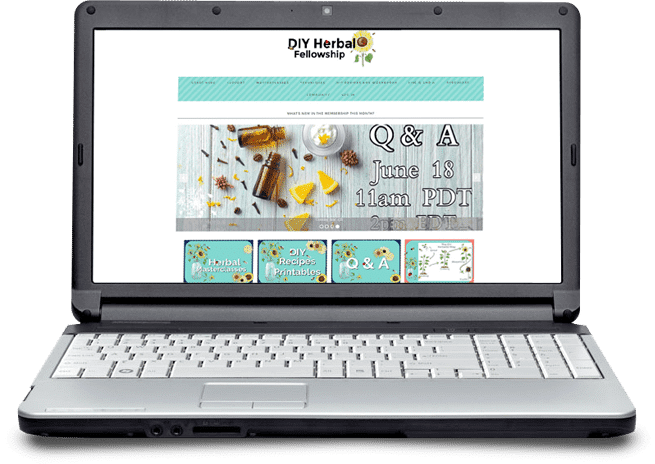
The DIY Herbal Fellowship is an online herbalism school offering very affordable herbalist training for students at all levels of experience. The school is modeled as a membership to allow students a wide variety of classes to create a customized herbal education and help each student meet their personal goals in growing and using herbs for wellness. Whether you are looking to explore herbalism as a hobby or personal endeavor or preparing for community impact, the DIY Herbal Fellowship has herbal classes that meet your personal goals of mastery from family herbalism to Village herbalism. The DIY Herbal Fellowship is focused on the community centered spirit of herbalism through monthly informal, virtual gatherings and group mentorship in regional herbalism. Be part of the community and learn with us. Inside the membership, last month we learned about basil and tulsi basil in depth, as well as other radio-protective herbs (herbs that protect from radiation of all types). If you are ready to explore herbs in a deeper way, in community with others who share a passion for growing and using herbs, the DIY Herbal Fellowship welcomes you. 
****************************************************


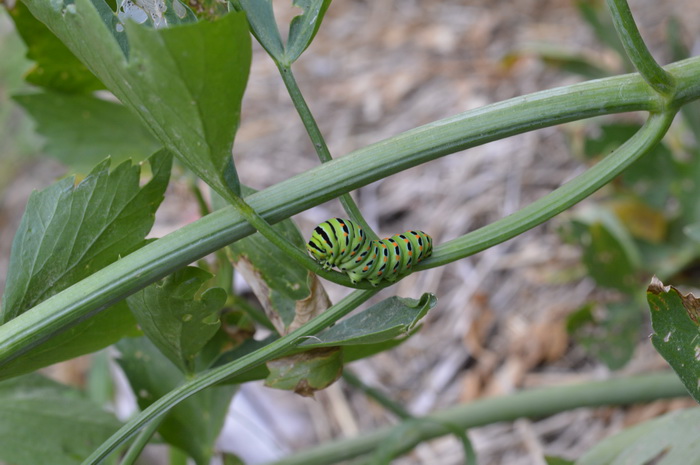

do you raise or sell Bilberry plants?
Thank you for sharing your knowledge of theses matters to help us who do not know this but would like to. Kelley